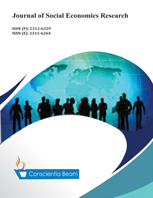Rural - Urban Balance as a Measure of Socio-Economic Development with Special Reference to Iran
DOI:
https://doi.org/10.18488/journal.35/2016.3.1/35.1.1.12Abstract
The dual rural-urban imbalance is a major obstacle to integrating socio-economic development in most developing countries including Iran. The paper explores how the rural-urban balance could play as a paradigm to development in general. Dual rural-urban economic structure which refers to different growth patterns in rural and urban areas leading to a wide rural-urban gap ___ a chronic problem in many developing societies with a reference to Iran, needs to be narrowed. Iran needs to plan and build a new type of agriculture-industry and rural-urban relations in which the agricultural sector promotes and feed the industrial sector and the vice versa. The paper proposes a strategy in which agriculture and industry; rural and urban sectors benefit each other. However, rural-urban balance optimistically results in socio- economic development and integration, and on the contrary, surging urbanization leads to shrinking farmland areas. The paper discover that if rural communities are properly empowered, they can and may manage their own local development efforts.

